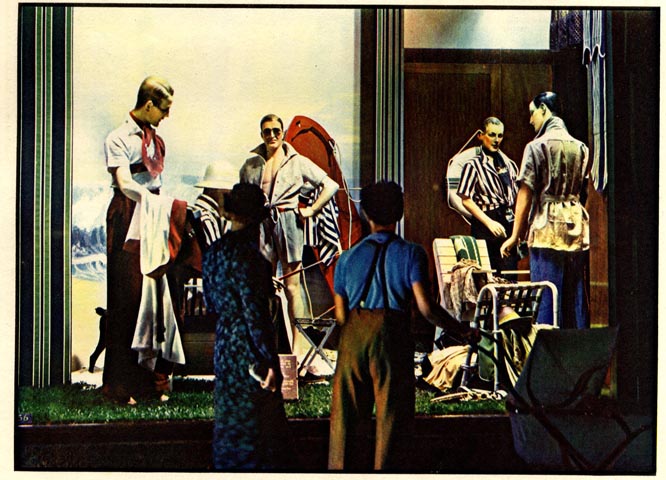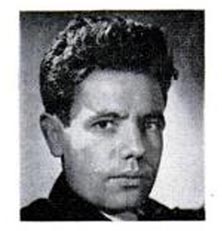back
VALENTINO SARRA

| HORMEL 1937 | |
| MARSHALL FIELD 1936 | |
| THE CAT(ERPILLER TRACTOR) MAY 1938 | |
| PACKARD, JANUARY 1937 |
| SARRA ADVERTISEMENT 01 1948 | |
| SARRA ADVERTISEMENT 02 March 1948 |

| ROBERT ELKINGTON WOOD OF SEARS ROBUCK 1938 | |
| MILLS OF GARY C1938 |
VALENTINO SARRA (1903-1982) was the most successful Twentieth Century Advertising Photographer of them all - fame, money, influence, offices in New York, Chicago and Hollywood, with an extensive Movie business to boot. Without his New Yorker profile by Andy (Isobel) Logan, September 1st 1951, he might be assumed to be slick and dull. She writes with a caustic panache, "In the world Sarra creates, the mothers of the nation, as they slit the Kellogg's Corn Soya Box [added here] Having studied the medium under Rudolf Namias in Milan, Sarra arrived in America in 1921, and initially planned to make his living being an engineer (production worker) for Ford at Detroit. He soon turned to low level local portrait photography, helping out over Christmas. His commercial photography developed quickly, with articles in the Uncritical Press and in 1927 the youngest ever associate of the Royal Photographic Society of Great Britain. He moved to New York, working for various studios, the White Studio for example, while still mining the Salon circuit nationally and internationally. In 1929 he was given a show at the New York Camera Club where his work was seen by Edward Steichen who sent him and his portfolio to Lejaren Hiller at Underwood and Underwood where he got a job. Hiller was athe acknowledged master of the expressive photographic image, reinforcing, driving home the advertiser's message. Sarra responded enthusiastically to the challenge,"I learnt illustrating from Hiller" he admitted. After a year he was sent as Underwood and Underwood's man to Chicago where quickly he baulked at conventional time keeping and in November 1932 set up on his own as Sarra Inc. He had also worked with Fred Plumer Inc in Chicago who was making interesting experiments with colour in photography. The key image was a March 1932 published in the Saturday Evening Post for Johnson's wax in colour, establishing his reputation of being able to show a fee paying product in glowing hues. In 1935 he established a large studio in the old Marshall Field office in Chicago. By 1939 his main office had opened in New York. where he became accepted as the Master of the Dramatic Photographic Image, often finding ways to visualise the invisible, notably the unease and disquiet in the dispeptic consumer to which Eno's Fruit Salts was the cure. In 1945 he launched his TV commercial department, working on the first marching cigarette conception for LUCKY STRIKE. At the time of the excellent New Yorker Profile his offices were situated on three floors of a five floor building at 200 East 56th Street, with TV studios and full size kitchen for domestic visualisation. His work for FORTUNE pre-dates the golden shower of money and fame, and shows some uncharacteristic gritty realism particularly in his Hormel Meat portfolio. His extensive portfolio for the Marshall Field feature is significant in his developing career. During this period he also worked designing WPA posters, "Give "Em the Stuff to Fight with..."being the best known. Above all, FORTUNE seems to have engaged him for his luscious sense of colour and the drama of the commercial world. He was married briefly to the actress Marcy Westcott. |
| see Valentino Sarra. “Photography Then and Now.” Popular Mechanics, July 1952 |
back